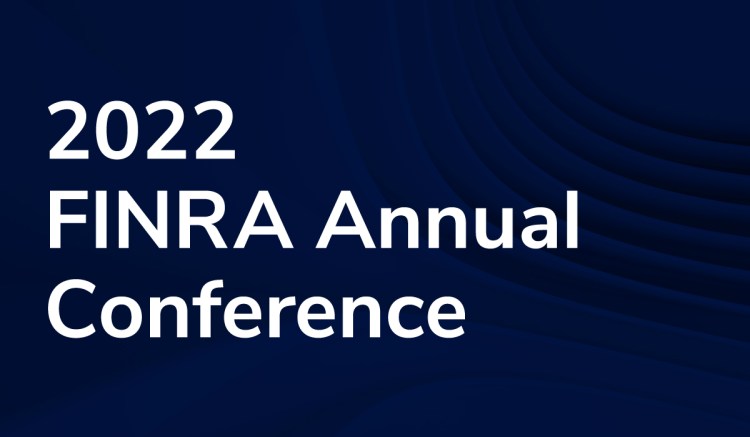
Reflections from FINRA: Compliance Transforms for a Digital-First Future
Global Relay Executive VP of Compliance Chip Jones on digital permanence, remote compliance, and the new realities of electronic record keeping.
During my 19 years with FINRA, the organization’s annual meeting served as a milestone that I looked forward to every year. In May 2019, when I moderated the last panel discussion at the FINRA Annual Conference, I had no idea that in less than a year, a global pandemic would turn the world upside down.
It took three years for FINRA to return to an in-person annual conference this past May. What a difference those three years have made. I retired from FINRA in 2020 and joined Global Relay in the same year.
It was strange to attend the FINRA Annual Conference as a guest instead of managing the show, but it also gave me a new perspective. On the other side of the fence, not as a regulator but as an industry member. What struck me was the profound impact of digital transformation within the industry in such a short time.
The Advent of Remote Inspections
At the time of the 2019 annual conference, the big news was Regulation Best Interest (Reg BI), an SEC rule that provides a stricter standard of conduct for broker-dealers.
By March 2020, the COVID-19 pandemic and ensuing lockdowns upended all other concerns. Overnight, broker-dealers embraced remote work. While most of them have the capability to work remotely, a major challenge was how to remain compliant.
FINRA regulations require broker-dealers to monitor their branches and agents by conducting onsite inspections. Broker-dealers with an Office of Supervisory Jurisdiction (OSJ) structure are responsible for overseeing branches and agents, including approving new accounts and customer communications. Regulations require periodic inspections of OSJs, branches, and non-branch sales offices. The frequency of inspection depends on certain factors, including activity conducted at the location, volume of business and complexity of securities activities.
FINRA was compelled to allow remote inspections, at least until the end of this year. It was a tremendous shift in the mindset of regulators who have traditionally equated compliance with onsite and in-person inspections.
Digital Permanence
To conduct and participate in remote inspections, OSJs and branch offices used collaboration platforms such as Microsoft Teams, Zoom, Slack, and WebEx. To the amazement of everyone in the industry (SEC and FINRA included), broker-dealers adapted quickly and effectively. They continue to conduct remote inspections today as COVID-19 infection rates alternately surge and drop across the country.
As it turned out, remote work is just the tip of the iceberg when it comes to the financial industry’s digital transformation. In the past two years, we’ve also seen a dramatic shift in the behavior and expectations of customers. They, too, have embraced remote activities, from shopping to investing.
The pandemic lockdowns also led to an increase in social media use, with more users spending more time on a myriad of platforms. In particular, millennial and Gen Z customers began turning to social media to learn about the market and use fintech and investment apps to manage their accounts. Robinhood, Betterment, and Wealthfront are among the most popular apps for trading and portfolio management. Younger investors, however, are more inclined to learn about investing from a TikTok influencer than a professional broker or financial adviser.
SEC, FINRA, and the industry are grappling with this new reality. On the one hand, technology-driven tools offer many benefits to customers and financial firms alike. They open up access to financial products and services at lower costs. On the other hand, the combination of mobile technologies and the growing role of social media in investing exposes the younger and inexperienced investors to more complicated, high-risk trading options. They can potentially be subjected to unfair practices or scams.
A New Era of Remote Compliance
Today, the industry is grappling with two key questions brought about by rapid digitization. First, how can regulators and financial firms ensure that apps, social media communications, and their outputs are in line with compliance requirements? Second, should remote inspections stay in place for good?
In both areas, there’s simply no going back to our pre-pandemic mindset. We can expect the use of social media, fintech platforms, and apps in finance-based exchanges to continue to be prevalent.
In terms of remote inspections, the consensus, at least from the industry perspective, is that they are just as effective as onsite inspections. In addition, remote supervision has proven to be more cost-effective and has given supervisors more flexibility in addressing risks.
A number of big firms have attested to the efficiency and effectiveness of remote compliance. They have proposed that remote inspections and exams be allowed to remain. They argue that most firms are adopting a hybrid workplace that combines onsite and offsite work permanently, so remote inspections and exams make sense in the long haul.
Whether the SEC and FINRA agree with this proposal remains to be seen. In the meantime, it’s likely that the answers to the questions I posed above lie in further digitalization. Just as technology brought fintech, apps, social media, and collaboration platforms to the industry, new digital solutions will also help ensure that firms remain compliant.
Author Bio
Chip Jones is the executive vice president of compliance at Global Relay. He served as senior vice president of member relations and education at FINRA. His almost two decades of leadership experience with FINRA included maintaining and enhancing open and effective dialogue with member firms and overseeing the organization’s member education area. Prior to joining FINRA, he was vice president of regulatory and industry affairs at American Express Financial Advisors and a senior examiner/investigator at the Virginia Securities Division.



